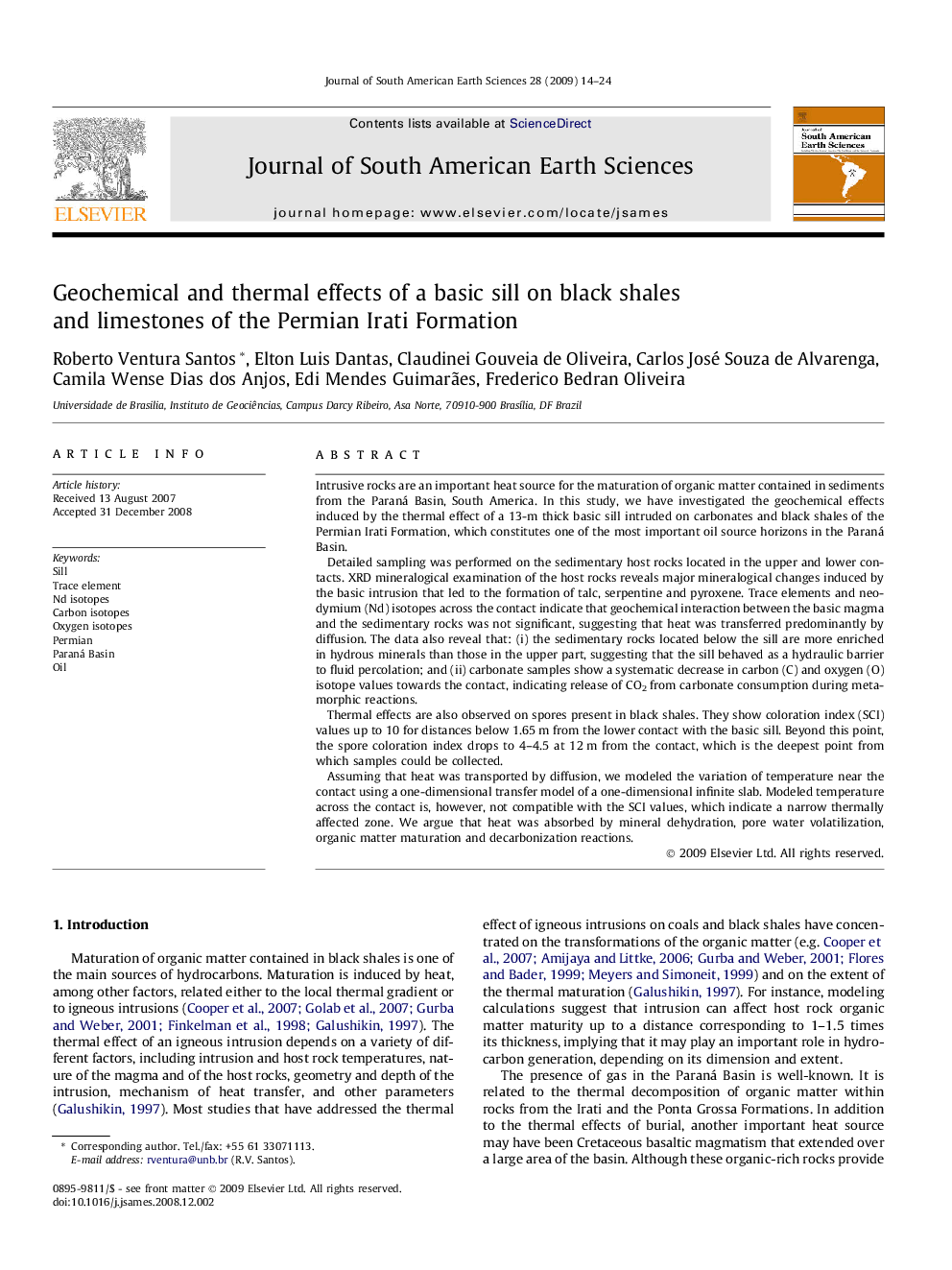| کد مقاله | کد نشریه | سال انتشار | مقاله انگلیسی | نسخه تمام متن |
|---|---|---|---|---|
| 4682858 | 1348949 | 2009 | 11 صفحه PDF | دانلود رایگان |

Intrusive rocks are an important heat source for the maturation of organic matter contained in sediments from the Paraná Basin, South America. In this study, we have investigated the geochemical effects induced by the thermal effect of a 13-m thick basic sill intruded on carbonates and black shales of the Permian Irati Formation, which constitutes one of the most important oil source horizons in the Paraná Basin.Detailed sampling was performed on the sedimentary host rocks located in the upper and lower contacts. XRD mineralogical examination of the host rocks reveals major mineralogical changes induced by the basic intrusion that led to the formation of talc, serpentine and pyroxene. Trace elements and neodymium (Nd) isotopes across the contact indicate that geochemical interaction between the basic magma and the sedimentary rocks was not significant, suggesting that heat was transferred predominantly by diffusion. The data also reveal that: (i) the sedimentary rocks located below the sill are more enriched in hydrous minerals than those in the upper part, suggesting that the sill behaved as a hydraulic barrier to fluid percolation; and (ii) carbonate samples show a systematic decrease in carbon (C) and oxygen (O) isotope values towards the contact, indicating release of CO2 from carbonate consumption during metamorphic reactions.Thermal effects are also observed on spores present in black shales. They show coloration index (SCI) values up to 10 for distances below 1.65 m from the lower contact with the basic sill. Beyond this point, the spore coloration index drops to 4–4.5 at 12 m from the contact, which is the deepest point from which samples could be collected.Assuming that heat was transported by diffusion, we modeled the variation of temperature near the contact using a one-dimensional transfer model of a one-dimensional infinite slab. Modeled temperature across the contact is, however, not compatible with the SCI values, which indicate a narrow thermally affected zone. We argue that heat was absorbed by mineral dehydration, pore water volatilization, organic matter maturation and decarbonization reactions.
Journal: Journal of South American Earth Sciences - Volume 28, Issue 1, July 2009, Pages 14–24